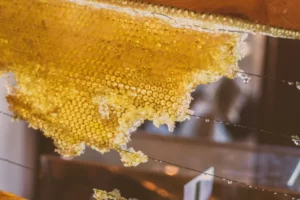Table of Contents
Introduction
Cats are obligate carnivores, meaning their diet primarily consists of meat and they require certain nutrients that are found in animal-based proteins. However, sometimes our feline friends show interest in foods that are not a part of their natural diet. One such food is Honey Nut Cheerios, a popular breakfast cereal enjoyed by many. In this article, we will delve into whether cats can eat Honey Nut Cheerios and explore the potential risks and alternatives.
What Are Honey Nut Cheerios?
Honey Nut Cheerios is a well-known brand of breakfast cereal produced by General Mills, a prominent American food company. It is a variation of the original Cheerios cereal, which is made from toasted whole-grain oats. As the name suggests, Honey Nut Cheerios adds a honey and nut flavor to the original formula.
The cereal consists of small, ring-shaped oats that are flavored with honey and mixed with almond flavoring. It is a sweet and crunchy snack that is commonly enjoyed as a breakfast option or as a standalone treat. Honey Nut Cheerios is not only known for its distinctive taste, combining the sweetness of honey with a hint of nuttiness, but also for being marketed as a healthier cereal option. It is typically low in fat, cholesterol-free, and contains essential vitamins and minerals such as iron, calcium, and vitamin D.
Can Cats Have Honey Nut Cheerios?
While cats may occasionally show interest in foods like Honey Nut Cheerios, it is important to note that this cereal is not an ideal or recommended food for them. Cats have specific dietary requirements that are best met through a meat-based diet. Let’s explore the reasons why Honey Nut Cheerios may not be suitable for cats.
Are Honey Nut Cheerios Toxic to Cats?
Honey Nut Cheerios are not naturally toxic to cats. However, they are not a suitable food either and should not be a regular part of a cat’s diet. The ingredients in this cereal, such as grains, sugars, honey, and nuts, are not easily digested by a feline’s digestive system and can lead to gastrointestinal upset or other health issues.
It’s important to note that if your cat consumes a small amount of Honey Nut Cheerios, there is no need to panic as it is unlikely to cause any serious harm. However, it is best to avoid feeding this cereal to cats altogether.
Do Honey Nut Cheerios Provide Nutritional Value for Cats?
The nutritional value of Honey Nut Cheerios for cats is limited. While the cereal may provide small amounts of carbohydrates and some micronutrients, these quantities are insufficient to meet the nutritional requirements of a cat. Moreover, cats lack certain enzymes necessary for efficiently digesting grains and sugars. Therefore, feeding Honey Nut Cheerios to cats does not provide the necessary nutrients in appropriate proportions for feline health.
Risks of Feeding Honey Nut Cheerios to Cats
Feeding Honey Nut Cheerios to cats can pose several risks to their health. These risks include:
-
Digestive issues: Cats have a sensitive digestive system that is adapted to a meat-based diet. Honey Nut Cheerios contain grains, sugars, and other ingredients that are not easily digestible by cats. Consumption of these ingredients can lead to gastrointestinal upset, including diarrhea, vomiting, or stomach discomfort.
-
Nutritional imbalance: Cats have specific nutritional requirements, and their diet should primarily consist of animal-based proteins, essential fatty acids, vitamins, and minerals. Honey Nut Cheerios do not provide the necessary nutrients in the appropriate proportions for feline health. Feeding cats a cereal designed for humans can result in nutritional deficiencies or imbalances.
-
Allergic reactions: Some cats may have allergies or sensitivities to certain ingredients found in Honey Nut Cheerios, such as grains or nuts. Allergic reactions can manifest as skin irritations, itching, or digestive disturbances.
-
Obesity and weight gain: Honey Nut Cheerios is a processed snack that often contains added sugars. Feeding such sugary foods to cats can contribute to weight gain and obesity, which can lead to various health issues.
-
Dental problems: Cereals like Honey Nut Cheerios can stick to cats’ teeth, promoting plaque buildup and potentially leading to dental issues like tooth decay or gum disease.
Signs of Honey Nut Cheerios Allergy in Cats
If your cat consumes Honey Nut Cheerios and is allergic to any of the ingredients, they may exhibit signs of an allergic reaction. Watch out for the following symptoms:
-
Skin irritation: Look out for signs of itching, redness, swelling, or a rash on your cat’s skin. Your cat may excessively scratch, lick, or bite at certain areas of their body.
-
Digestive issues: Allergies can manifest as gastrointestinal problems in cats. Watch for symptoms such as vomiting, excessive gas, or changes in stool consistency.
-
Swelling: Allergic reactions can sometimes lead to facial swelling, particularly around the lips, muzzle, or eyes. If you notice any sudden swelling, it’s essential to seek veterinary attention immediately.
-
General discomfort: Cats may exhibit signs of overall discomfort or unease, such as restlessness, lethargy, or a decrease in appetite.
Alternative Treat Options for Cats
While Honey Nut Cheerios may not be suitable for cats, there are plenty of alternative treat options that can be both enjoyable and nutritious for them. Here are some options to consider:
-
Commercial Cat Treats: There are numerous brands of treats available that are specifically formulated for cats. These treats are designed to provide the necessary nutrients and flavors that cats need in their diet.
-
Freeze-Dried Meat: Cats are carnivores, and freeze-dried meat treats can be a great option to satisfy their natural instincts. These treats are made from high-quality meats such as chicken, fish, or beef and retain much of their nutritional value. They are typically low in carbohydrates and provide a protein-rich snack.
-
Fresh Meat: Cats can enjoy small amounts of plain cooked meat as a treat. Make sure the meat is boneless, skinless, and free from seasoning or spices. Examples include boiled chicken or fish.
-
Catnip: Many cats are highly responsive to catnip, which can be used as a safe and enjoyable treat. You can provide dried catnip or use catnip-infused toys to stimulate their senses and provide entertainment.
-
Interactive Treat Toys: Instead of traditional treats, consider using interactive treat toys that dispense small portions of kibble or treats as your cat plays with them. This can provide mental stimulation and prevent overeating.
-
Homemade Treats: If you enjoy cooking, you can make your own cat treats using cat-friendly recipes. There are various resources available online with recipes that use cat-friendly ingredients such as tuna, chicken, or pumpkin.
Conclusion
In summary, while Honey Nut Cheerios may be enjoyed by humans, they are not recommended as a regular part of a cat’s diet. Cats have specific dietary requirements that are best met through a meat-based diet. Feeding Honey Nut Cheerios to cats can lead to digestive issues, nutritional imbalances, allergic reactions, obesity, and dental problems. It is important to provide cats with treats that are specifically formulated for their nutritional needs. There are plenty of alternative treat options available that can provide both enjoyment and proper nutrition for cats. When in doubt, consult with your veterinarian for specific recommendations on providing treats that meet your cat’s nutritional needs.
Disclaimer: This article is for informational purposes only and should not be considered veterinary advice. Always consult with a qualified veterinarian before making any changes to your cat’s diet or introducing new foods.



